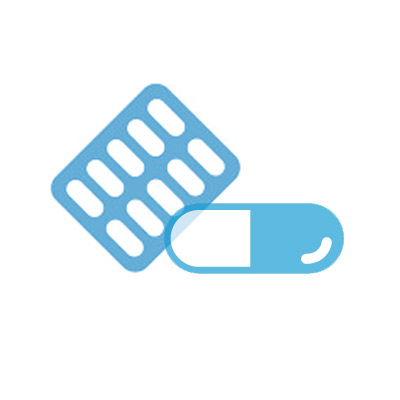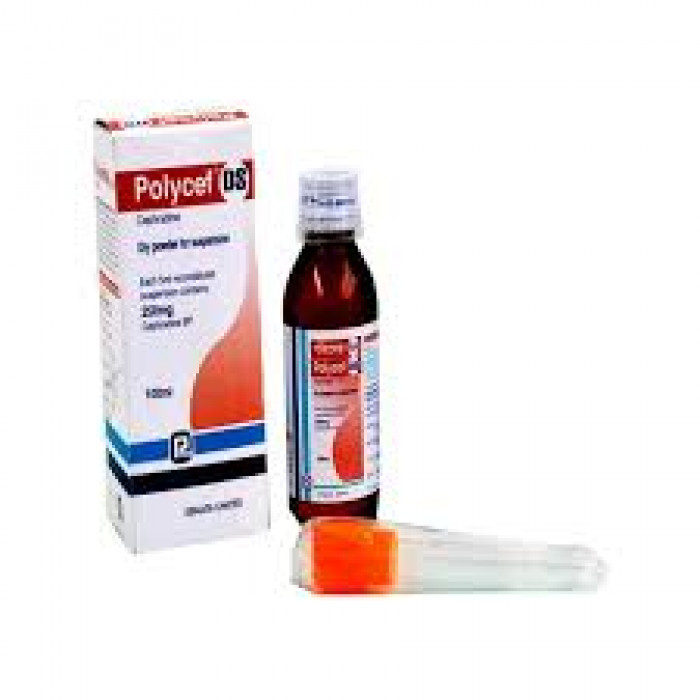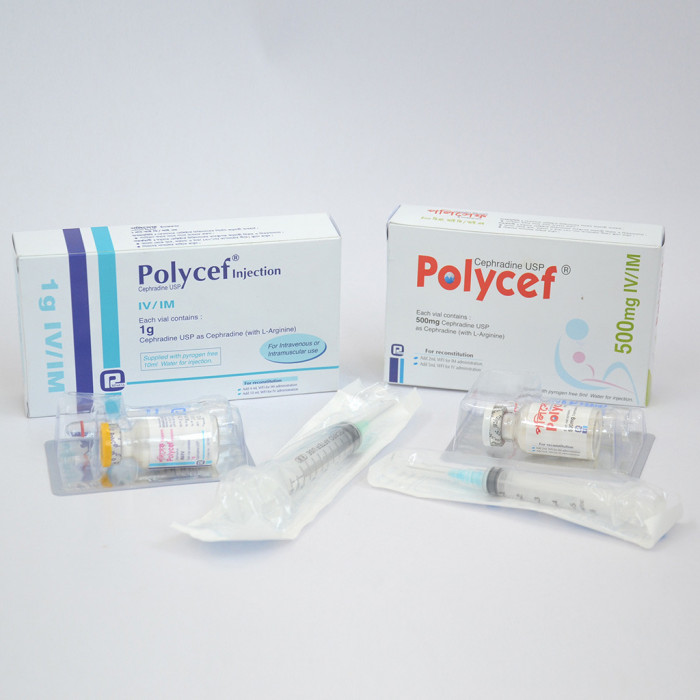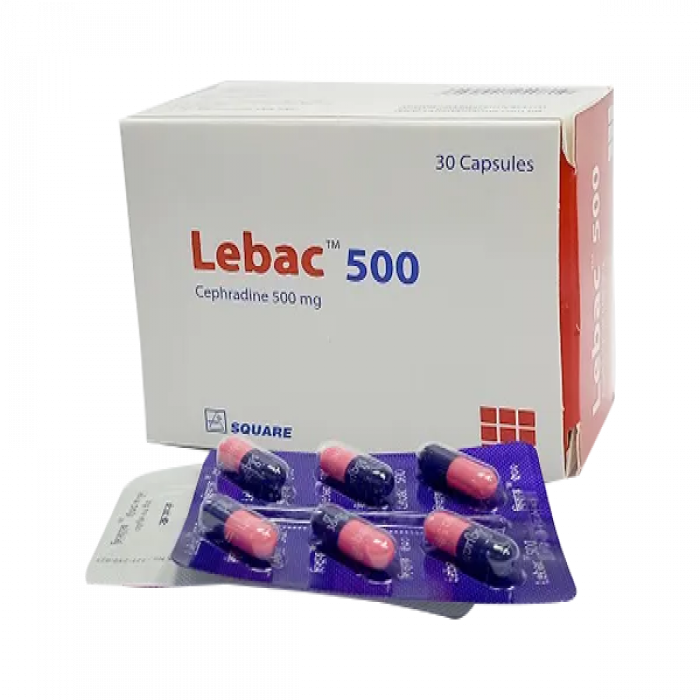
✔ 100% Authentic Product
👁️ Currently Viewing 4925
- Lebac 500 is a brand name for the antibiotic Cephradine.
- It belongs to the class of cephalosporin antibiotics and works by inhibiting the growth and multiplication of bacteria.
- Lebac 500 is prescribed in a dose of 500 mg and should be taken as directed by a healthcare provider to ensure complete eradication of the bacterial infection.
Discount
Price: ৳ 85
MRP:
৳
90.3
6%
Off

100% Genuine Products, Guaranteed

Safe & Secure Payments, Always

Fast, Secure & Efficient Delivery

Proper Packaging
 Cash on Delivery - All over Bangladesh
Cash on Delivery - All over Bangladesh Regular Delivery - 12-24 Hours, Dhaka City* Charge Tk.39-59
Regular Delivery - 12-24 Hours, Dhaka City* Charge Tk.39-59 Regular Delivery - 24-48 Hours, Other Cities* Charge Tk.99-110
Regular Delivery - 24-48 Hours, Other Cities* Charge Tk.99-110
 ফ্রি ডেলিভারিঃ - ৯৯৯ টাকা+ অর্ডারে, ঢাকা
শহরে
ফ্রি ডেলিভারিঃ - ৯৯৯ টাকা+ অর্ডারে, ঢাকা
শহরে ফ্রি ডেলিভারিঃ - ২৯৯৯ টাকা+ অর্ডারে, ঢাকার
বাহিরে
ফ্রি ডেলিভারিঃ - ২৯৯৯ টাকা+ অর্ডারে, ঢাকার
বাহিরে
100% Genuine Products, Guaranteed
Safe & Secure Payments, Always
Fast, Secure & Efficient Delivery
Proper Packaging
 Cash on Delivery - All over Bangladesh
Cash on Delivery - All over Bangladesh Regular Delivery - 12-24 Hours, Dhaka City* Charge Tk.39-59
Regular Delivery - 12-24 Hours, Dhaka City* Charge Tk.39-59 Regular Delivery - 24-48 Hours, Other Cities* Charge Tk.99-110
Regular Delivery - 24-48 Hours, Other Cities* Charge Tk.99-110 ফ্রি ডেলিভারিঃ - ৯৯৯ টাকা+ অর্ডারে, ঢাকা
শহরে
ফ্রি ডেলিভারিঃ - ৯৯৯ টাকা+ অর্ডারে, ঢাকা
শহরে ফ্রি ডেলিভারিঃ - ২৯৯৯ টাকা+ অর্ডারে, ঢাকার
বাহিরে
ফ্রি ডেলিভারিঃ - ২৯৯৯ টাকা+ অর্ডারে, ঢাকার
বাহিরে
✅ Description:
Lebac 500 is a brand name for the antibiotic Cephradine, which is used to treat various bacterial infections. It belongs to the class of cephalosporin antibiotics and works by inhibiting the growth and multiplication of bacteria, thereby helping to clear the infection. Lebac 500 is available in tablet form and is typically prescribed at a dose of 500 mg. It is important to take the medication as directed by a healthcare provider and to complete the full course of treatment to ensure that the infection is fully eradicated.
Safety Advices
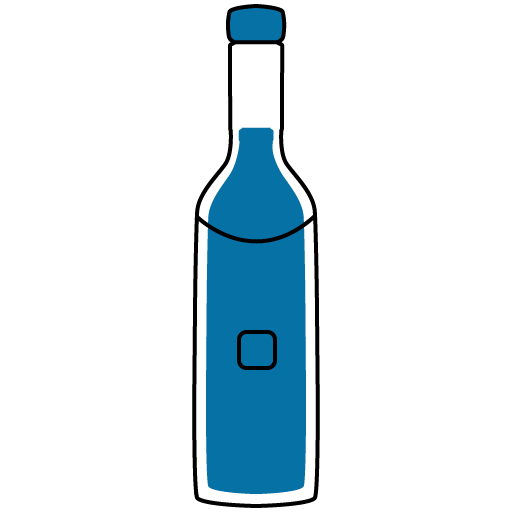
Alcohol
UNSAFE
Alcohol consumption with Lebac 500 can increase side effects like dizziness & nausea. So, it may be best to hold off on drinking alcohol until you have finished treatment.

Pregnancy
CONSULT YOUR DOCTOR
There is limited information on the use of Lebac 500 in pregnancy. Hence it is recommended not to use the same unless prescribed by your doctor.
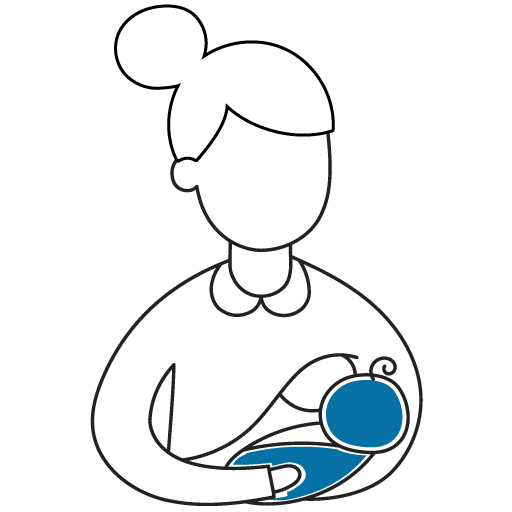
Breastfeeding
CONSULT YOUR DOCTOR
Lebac 50 passes into the breast milk in a very small amount. So caution should be exercised while giving this medicine to a nursing mother. If you are taking this medicine during breastfeeding, watch for diarrhea in the newborn baby.

Driving
CAUTION
It does not influence driving ability, but if you experience dizziness after taking this medicine, you should avoid the drive.
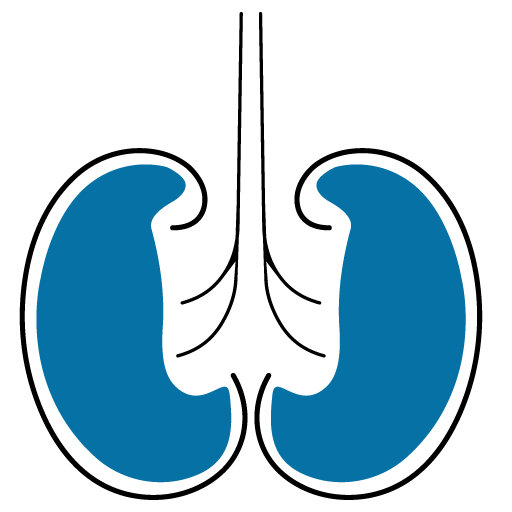
Kidney
CAUTION
Lebac 500 should be used with caution in patients with severe kidney diseases. Contact your doctor before taking it.

Liver
CAUTION
Lebac 500 should be used with caution in patients having a liver impairment. Contact your doctor before taking it.
✔️ Uses of Lebac 500
- Treatment of bacterial infections
✔️ Side Effects of Lebac 500
Symptoms:
- Diarrhoea
- Nausea
- Vomiting
- Leukopenia
- Neutropenia
- Eosinophilia
- Rash
- Pruritus
- Joint pain
- Increased BUN and creatinine
- Dizziness
Potentially Fatal:
- Pseudomembranous colitis
✔️ How to use Lebac 500?
Use as prescribed by your doctor.
✔️ Indications
Lebac 500 is an antibiotic used to treat various infections caused by Gram-positive and Gram-negative bacteria. It can be used for upper and lower respiratory tract infections, urinary system infections, and skin and soft tissue infections. The following bacteria are sensitive to Cephradine in vitro: Staphylococci (including penicillin-susceptible and resistant strains, as well as penicillinase-producing species), Streptococci, Streptococci pyogenes (beta-hemolytic), Streptococcus pneumonia, Escherichia coli, Klebsiella spp., Proteus mirabilis, Haemophilus influenza, Shigella spp., Salmonella spp. (including Salmonella typhi), and Neisseria spp. Cephradine's primary site of action is the bacterial cell wall, inhibiting the cross-linking process and causing the formation of a cell wall with numerous holes, leading to the lysis of bacteria due to external osmotic pressure. Cephradine is effective against many E.coli and Staphylococcus aureus strains that generate the enzyme penicillinase and are ampicillin resistant but are sensitive to Cephradine, which is unaffected by this enzyme.
✔️ Pharmacology
- Cephradine is a broad-spectrum bactericidal antibiotic that is semisynthetic in nature and can effectively treat infections caused by both gram-positive and gram-negative bacteria.
- Cephradine is active against both penicillinase-producing and non-producing staphylococci.
- The primary site of action of Cephradine is the bacterial cell wall, which contains peptidoglycan in sensitive organisms.
- Cephradine inhibits the cross-linking process of peptidoglycan, which leads to the formation of a cell wall with multiple holes and ultimately results in the lysis of bacteria due to external osmotic pressure.
✔️ Adult Dose
Oral: The usual dose is 1-2 gm daily in 2 to 4 divided doses. In severe and prolonged infection, the dose can be increased up to 4 gm daily which should be taken in equally divided doses.
- For lobar pneumonia, the recommended dose is 500 mg every 6 hours or 1 gram every 12 hours.
- In the case of urinary tract infections, the usual dose of Cefradine is 500 mg every 12 hours.
- For gastrointestinal tract infections, the recommended dose is 500 mg three to four times daily.
✔️ Child Dose
Oral: The usual total dose is 25 to 50 mg/kg/day given in 2 to 4 equally divided doses.
✔️ Administration
Perioperative prophylaxis: The recommended dose of Cefradine is 1-2 grams via intramuscular or intravenous administration. Subsequent doses, either parenteral or oral, should be given as appropriate.
- Treatment should continue for at least 48-72 hours after the patient becomes asymptomatic or bacterial eradication has been achieved.
✔️ Interaction of Lebac 500
- Concurrent use of nephrotoxic medications such as aminoglycosides with Cefradine may increase the risk of kidney injury.
- The use of diuretics (such as frusemide and ethacrynic acid) and probenecid with Cefradine increases the risk of kidney toxicity.
✔️ Contraindications
Individuals with a known or suspected allergy to cephalosporins should not use Lebac 500.
✔️ Pregnancy & Lactation
- Animal investigations have not demonstrated any teratogenic effects of Lebac 500. However, safety during pregnancy has not been established.
- Lebac 500 is excreted in breast milk and should be avoided by breastfeeding women.
- The medication may cause dizziness, and patients should be advised against operating potentially hazardous machinery such as vehicles.
✔️ Precautions & Warnings of Lebac 500
- Prolonged use of anti-infectives may lead to the development of superinfection due to the emergence of resistant organisms.
- Lebac 500 should be used with caution in patients who are hypersensitive to penicillins, as cross-sensitivity between beta-lactam antibiotics may occur.
- Coombs' testing may yield a positive result when cephalosporin antibiotics are administered. If neonates are tested for Coombs' status and their mothers have received cephalosporins before labor, a positive result may be due to the drug.
- Lebac 500 may produce a false positive urine glucose result when Benedict's or Fehling's solutions or tablets such as Clinitest are used in the testing. This does not occur with enzyme-based tests such as Clinistix or Diastix.
- Renal impairment requires dosage adjustment.
- This medication contains lactose. Patients with rare hereditary conditions, such as galactose intolerance, Lapp lactase deficiency, or glucose-galactose malabsorption, should not take this medicine.
✔️ Storage Condition of Lebac 500?
- Cephradine Suspension should be freshly prepared and used promptly.
- If stored at room temperature, reconstituted Suspension should be used within 7 days. If refrigerated, it should be used within 14 days.
- Cephradine Injection solutions must be used within 2 hours when stored at room temperature. When kept at 5°C, solutions retain their efficacy for 12 hours.
- The color of reconstituted solutions may vary from pale to straw yellow, but this does not affect their effectiveness.
- Expired medication should not be used. Keep all medications out of children's reach.
- Dispensing of Cephradine Suspension should only be done with a prescription from a qualified physician.
⚠️Disclaimer:
At ePharma, we’re committed to providing accurate and accessible health information. However, all content is intended for informational purposes only and should not replace medical advice from a qualified physician. Please consult your healthcare provider for personalized guidance. We aim to support, not substitute, the doctor-patient relationship.




